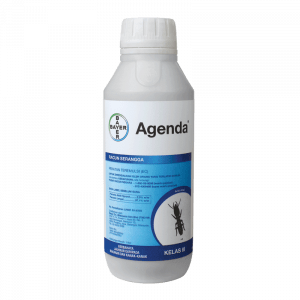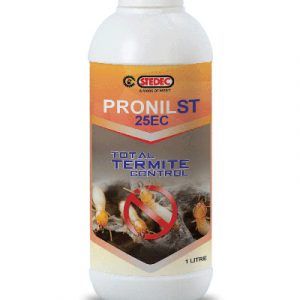Household pests are a common problem that many homeowners face. These pests can be anything from insects to rodents, and they can cause damage to your property and even pose health risks to you and your family.
In this article, we will take a closer look at the most common household pests, their identification, behavior, prevention, and control.

Common Household Pests
Ants
Ants are one of the most common household pests found in many homes around the world. They are social insects that live in large colonies and can be found in various sizes and colors.
Ants are attracted to food and water sources, and they enter homes through small cracks and crevices.
Identification
Ants have a narrow waist, elbowed antennae, and a distinct head and thorax. They can be black, brown, red, or yellow in color, and their size can range from as small as 1/16 inch to as large as 1/2 inch.
Behavior
Ants are highly organized and follow a specific set of behaviors. They communicate with each other through chemical signals and use trails to find their way back to their nest.
Ants can be aggressive when their nest is disturbed or when they feel threatened.
Prevention and Control
To prevent ants from entering your home, it’s essential to keep your kitchen and dining areas clean and free of crumbs and food scraps. Seal all cracks and crevices that ants can use to enter your home, and trim any trees or bushes that are touching your house. If you have an ant infestation, you can use bait stations or sprays to control them.
Cockroaches
Cockroaches are another common household pest found in many homes. They are nocturnal insects that prefer warm and humid environments. Cockroaches can be carriers of disease and can trigger allergies in some people.
Identification
Cockroaches have flat and oval-shaped bodies, and they can be brown or black in color. They have long antennae and six legs, and their size can range from as small as 1/2 inch to as large as 2 inches.
Behavior
Cockroaches are highly adaptable insects and can survive in various environments, including sewers and garbage areas. They are attracted to food sources and can enter your home through cracks and crevices.
Prevention and Control
To prevent a cockroach infestation, it’s essential to keep your kitchen and dining areas clean and free of food scraps. Seal all cracks and crevices in your home and remove any clutter or debris that can provide hiding places for cockroaches. If you have a cockroach infestation, you can use bait stations or sprays to control them.
Bed Bugs
Bed bugs are small insects that feed on human blood. They are nocturnal and prefer to live in warm and cozy environments, such as your bed or couch. Bed bug infestations can be challenging to control and can cause allergic reactions in some people.
Identification
Bed bugs are reddish-brown and have flat and oval-shaped bodies. They are about the size of an apple seed and can be difficult to see. Bed bugs leave behind small, reddish-brown stains on your sheets or mattress, which can be a sign of an infestation.
Behavior
Bed bugs feed on human blood and can bite multiple times during the night. They are attracted to the carbon dioxide we exhale and can travel from room to room by hitchhiking on our clothing or luggage.
Prevention and Control
To prevent a bed bug infestation, it’s essential to inspect any used furniture or clothing before bringing it into your home. Keep your bedding clean and wash it regularly in hot water. If you have a bed bug infestation, it’s best to call a professional exterminator to control it.
Rodents
Rodents, such as mice and rats, are common household pests that can cause damage to your property and pose health risks to you and your family. They can enter your home through small cracks and crevices and are attracted to food and water sources.
Identification
Mice and rats have pointed noses, large ears, and long tails. They can be brown, black, or gray in color and have a size ranging from 5 to 8 inches.
Behavior
Rodents are nocturnal and can be heard scurrying around at night. They can cause damage to your property by chewing on wires and other materials, and they can also spread disease through their droppings.
Prevention and Control
To prevent a rodent infestation, it’s essential to seal all cracks and crevices in your home and remove any clutter or debris that can provide hiding places for rodents. Keep your food in sealed containers, and remove any food scraps promptly. If you have a rodent infestation, it’s best to call a professional exterminator to control it.
Termites
Termites are small insects that feed on wood and other cellulose-based materials. They can cause significant damage to your property and are often not noticed until it’s too late.
Identification
Termites have a soft bodies and straight antennae. They are pale in color and can be up to 1/2 inch in length.
Behavior
Termites live in large colonies and can cause significant damage to your property by chewing on wood and other materials. They are attracted to moisture and can enter your home through small cracks and crevices.
Prevention and Control
To prevent a termite infestation, it’s essential to eliminate any moisture sources in and around your home. Remove any standing water, and fix any leaks promptly. Keep your woodpiles away from your home and inspect your home for any signs of termite
infestation regularly. If you have a termite infestation, it’s best to call a professional exterminator to control it.
Ants
Ants are common household pests that can enter your home in search of food and water. They can build their nests inside or outside of your home and can be challenging to control.
Identification
Ants come in various sizes and colors, but they all have three distinct body segments: the head, thorax, and abdomen.
Behavior
Ants live in colonies and communicate with each other using chemical signals. They can be attracted to food scraps and can enter your home through small cracks and crevices.
Prevention and Control
To prevent an ant infestation, it’s essential to keep your kitchen and dining areas clean and free of food scraps. Seal all cracks and crevices in your home and remove any clutter or debris that can provide hiding places for ants. If you have an ant infestation, you can use bait stations or sprays to control them.
Conclusion
In conclusion, there are several common household pests that you should be aware of, including cockroaches, bed bugs, rodents, termites, and ants. By knowing how to identify these pests and understanding their behavior, you can take the necessary steps to prevent and control infestations in your home.
If you have an infestation, it’s best to call a professional exterminator to help you get rid of the pests safely and effectively.
FAQs
-
What should I do if I find a cockroach in my home?
If you find a cockroach in your home, it’s essential to seal all cracks and crevices and remove any clutter or debris that can provide hiding places. You can use bait stations or sprays to control the infestation.
-
How can I prevent a bed bug infestation?
To prevent a bed bug infestation, inspect any used furniture or clothing before bringing it into your home. Keep your bedding clean and wash it regularly in hot water.
-
Can rodents spread disease?
Yes, rodents can spread disease through their droppings, urine, and saliva. It’s essential to control a rodent infestation promptly to prevent the spread of disease.
-
What should I do if I have a termite infestation?
If you have a termite infestation, it’s best to call a professional exterminator to control it. You should also eliminate any moisture sources in and around your home and inspect your home regularly for signs of termite damage.
-
How can I prevent an ant infestation?
To prevent an ant infestation, keep your kitchen and dining areas clean and free of food scraps. Seal all cracks and crevices in your home and remove any clutter or debris that can provide hiding places for ants.

Dr. Ahmed is a renowned entomologist with over 20 years of experience in studying insects. He obtained her Bachelor’s degree in Biology from the University of Punjab, and then completed his Master’s and Ph.D. in Entomology from the University of the Punjab.
Dr. Ahmed has conducted extensive research on the behavior, ecology, and evolution of insects. His work has been published in numerous peer-reviewed scientific journals and has been presented at international conferences. He has also served as a consultant for various organizations, including government agencies and private companies.







 Bayer Agenda 25 EC (Fipronil) 1 Liter Pack - Best Price in Karachi
Bayer Agenda 25 EC (Fipronil) 1 Liter Pack - Best Price in Karachi  Pronil ST 25% EC - Anti Termite Killer
Pronil ST 25% EC - Anti Termite Killer 